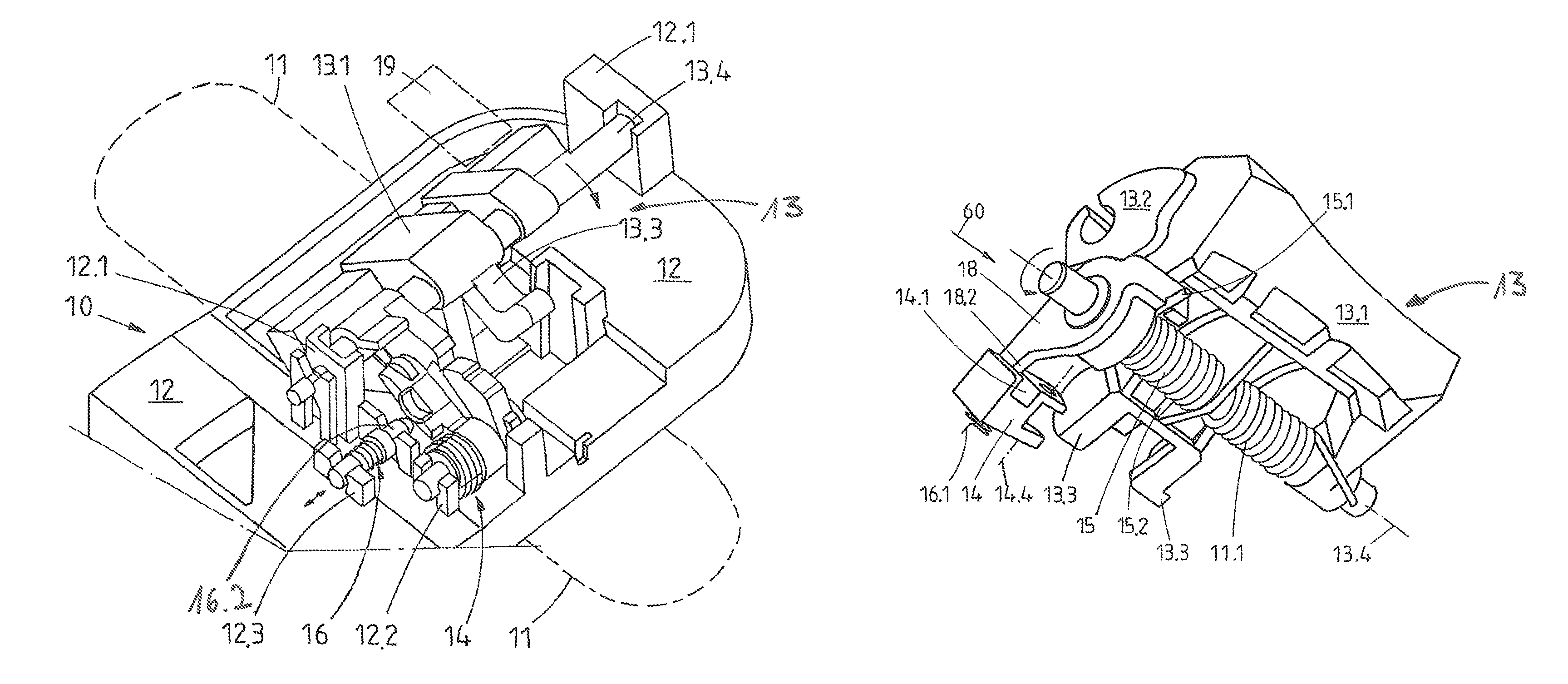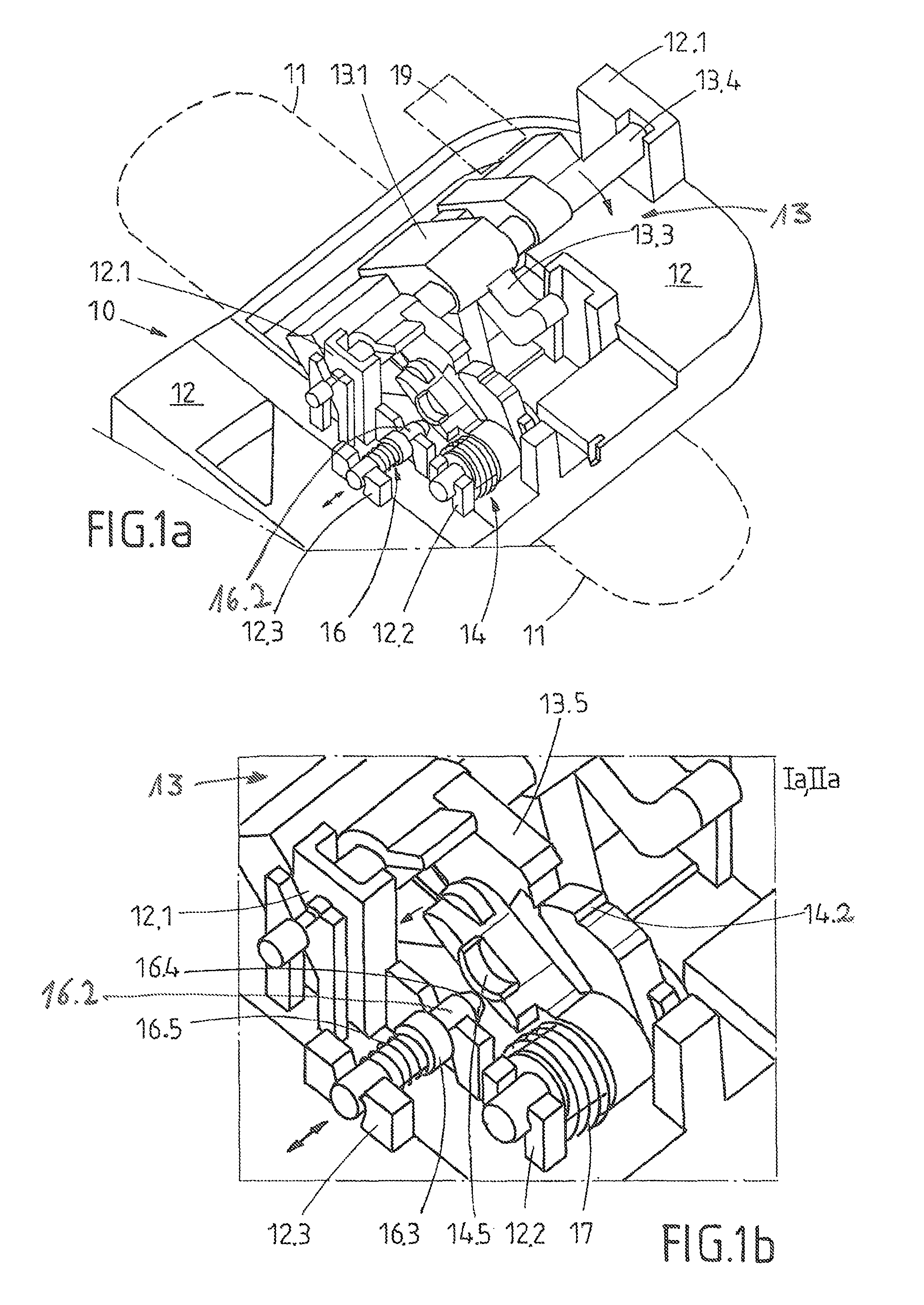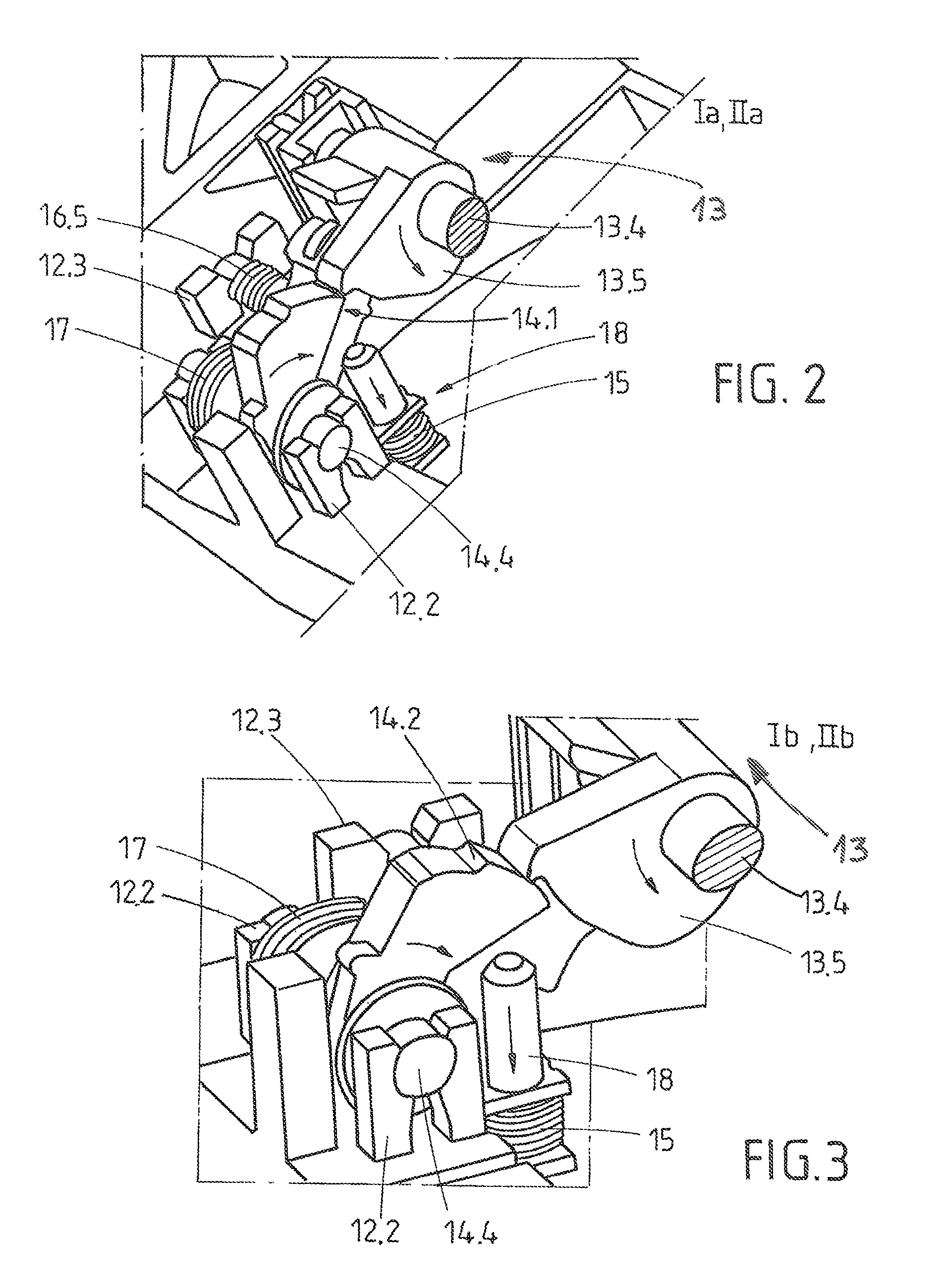Safety door handle
a door handle and door handle technology, applied in the field of door handle modules, can solve the problems of threatening hazard to the driver, acute and present, and achieve the effect of increasing the safety of the door handle modul
- Summary
- Abstract
- Description
- Claims
- Application Information
AI Technical Summary
Benefits of technology
Problems solved by technology
Method used
Image
Examples
Embodiment Construction
[0040]A first practical example of the door handle model 10 according to the invention for a vehicle is shown in FIG. 1a. The inside view or rear view of the door handle module 10 is then shown, in which the door handle 11 itself has been left out. For this reason, the door handle 11 is only indicated with dashed lines in FIG. 1. The door handle 11 cooperates from the outside with a mechanical coupling unit 13, which is mounted to move on the support frame 12 on the inside of the door. The door handle 11 is mounted to move in the support frame 12 or on the coupling unit 13. In order for a lock in the door to be opened with it, movement of the door handle 11 is transferred directly or indirectly to the lock via a mechanical coupling unit 13 through a transfer element.
[0041]The door handle module 10 according to the invention is equipped with a crash lock 14, which engages an additional spring 15 during an accident or during the action of acceleration forces. This additional spring 15...
PUM
| Property | Measurement | Unit |
|---|---|---|
| force | aaaaa | aaaaa |
| force | aaaaa | aaaaa |
| force | aaaaa | aaaaa |
Abstract
Description
Claims
Application Information
 Login to View More
Login to View More - R&D
- Intellectual Property
- Life Sciences
- Materials
- Tech Scout
- Unparalleled Data Quality
- Higher Quality Content
- 60% Fewer Hallucinations
Browse by: Latest US Patents, China's latest patents, Technical Efficacy Thesaurus, Application Domain, Technology Topic, Popular Technical Reports.
© 2025 PatSnap. All rights reserved.Legal|Privacy policy|Modern Slavery Act Transparency Statement|Sitemap|About US| Contact US: help@patsnap.com



